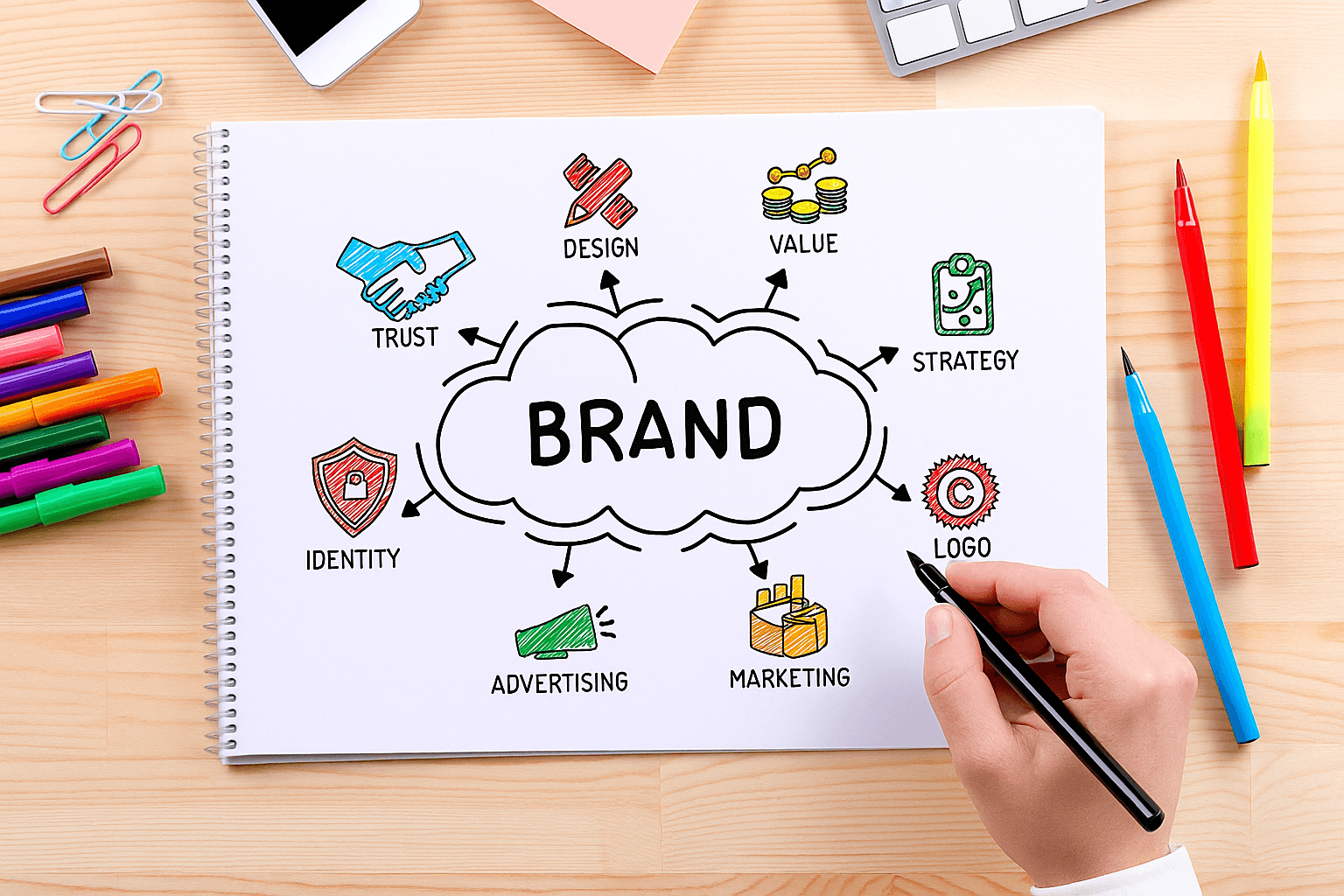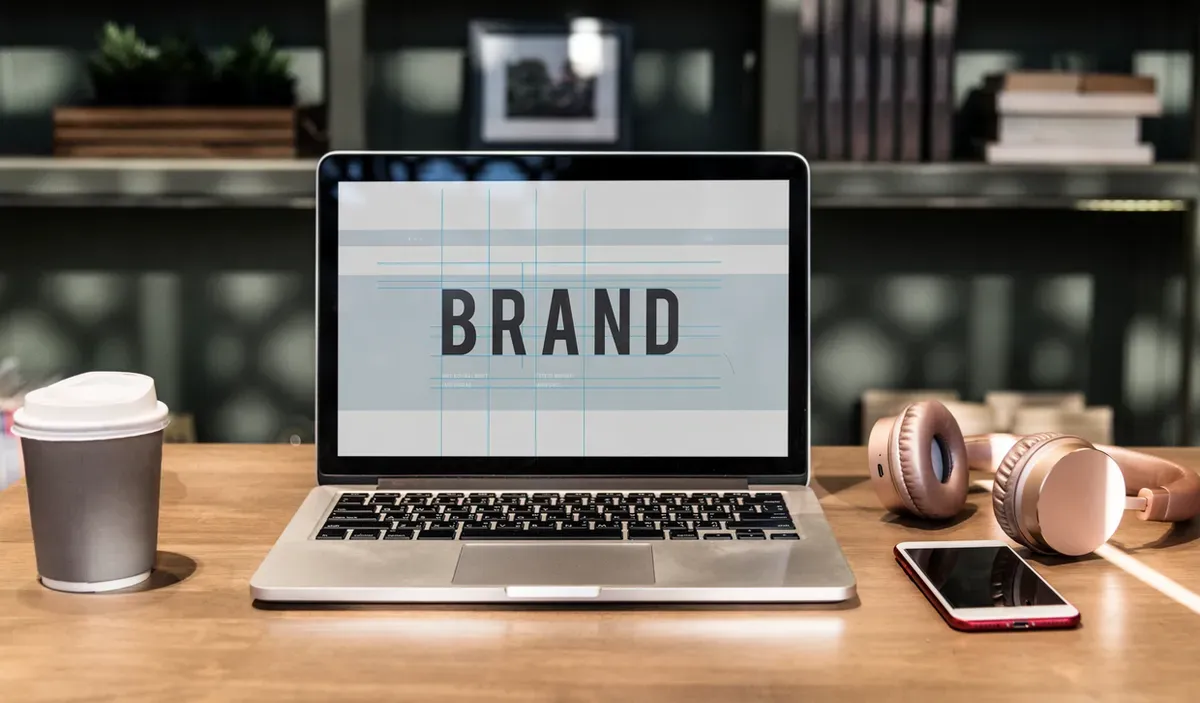Brand Identity vs Visual Identity: What’s the Real Difference?

Brand Identity vs Visual Identity: What’s the Real Difference?
“Most people use ‘brand identity’ and ‘visual identity’ interchangeably — but one defines your look, and the other defines your legacy.”
In the world of branding and design, superficial confusion often reigns: is the logo the brand? Is the colour palette the identity? In truth, brand identity and visual identity are related but distinct layers. For strategists, designers and business owners alike, understanding the difference — and how they work together — is what separates a brand that looks good from a brand that lasts.
1. Defining the Terms: Brand Identity & Visual Identity
What is Brand Identity?
Brand identity is the deeper, strategic layer of a brand. It defines who you are, why you exist, how you behave, and what you promise. As one resource explains:
“Brand identity reflects the brand’s positioning, values and voice.”
A comprehensive brand identity typically includes:
- Mission and Vision: Why your brand exists and where it’s headed.
- Core Values: The beliefs and principles guiding your decisions.
- Brand Personality: The human traits or emotional characteristics that shape how your brand behaves — e.g., confident, playful, innovative, or empathetic.
- Brand Voice: The consistent expression of your brand’s personality through words — what you say and how you say it. A luxury brand might sound refined and composed; a youth-focused one might sound bold and conversational.
- Brand Tone: The emotional inflection of your voice that adapts to context — formal in corporate communication, friendly on social media, empathetic in customer support.
- Ideal Customer or Persona: The specific audience your brand speaks to. This persona captures demographics, psychographics, needs, and motivations, ensuring that every decision — visual or verbal — resonates with the right people.
- Positioning and Promise: The space you occupy in your audience’s mind and the unique value you bring.
- Story and Experience: How your narrative unfolds across touchpoints, shaping perception and loyalty.
In short, brand identity is your brand’s DNA — a system that combines psychology, language, and intent to create clarity and connection.
What is Visual Identity?
Visual identity is the tangible expression of that brand identity — the face of the brand. It’s the set of design elements that communicate your brand visually. From one article:
“Visual identity is a brand’s consistent visual expression across all platforms.” And succinctly: “Brand identity describes who a brand is on the inside whereas visual identity expresses who a brand is on the outside.” It includes logos, colour palette, typography, imagery style, iconography, layout systems, and other graphic elements.
2. Why the Distinction Matters
If you treat the two terms as synonyms, you risk a disconnect: a brand that looks professional but lacks coherence, or visuals that mis-match what you stand for. One article puts it plainly:
“While visual identity is what people see first, brand identity is what sticks in their minds.”
Here are three risks of conflating them:
- Shallow branding: Focusing only on visuals (logo, colours) without strategic foundations means the brand may appear polished but be hollow.
- Incoherent visuals: Without a clearly articulated brand identity, your visuals may drift, change style, send mixed signals — confusing your audience.
- Lost ROI: Visual identity alone won’t drive loyalty or differentiation if the underlying brand identity isn’t aligned with what your customers care about.
3. Analogy That Works: Blueprint vs Facade
Think of a house:
- Brand identity is the architectural blueprint — the floor-plan, the structure, the materials, the purpose.
- Visual identity is the interior design — the paint colours, furniture, lighting, textures, accessories.
You wouldn’t decorate a house that doesn’t exist; likewise, you shouldn’t design a visual identity before you’ve clarified your brand identity. This analogy is echoed in expert commentary:
“Brand identity is the person’s character. Visual identity is their outfit.”
4. Key Components Compared
| Layer | Typical Components | Purpose / Outcome |
|---|---|---|
| Brand Identity | Mission & vision, core values, brand personality, brand voice, brand tone, positioning, ideal customer persona | Determines why you exist, who you serve, how you communicate, and what you stand for |
| Visual Identity | Logo & mark, colour palette, typography system, imagery style, iconography, layout grid | Enables you to look consistent, recognisable, and aligned with your brand identity |
For example: When Apple is analysed:
- Brand identity: Innovation, simplicity, premium lifestyle, clean voice, calm tone.
- Visual identity: Minimalist monochrome palette, clean typography, product-centred photography.
5. How They Work Together — And Who Needs Which First
Sequence & Priority
It’s tempting to start with the visuals because they’re tangible and fun. But many experts emphasise: define your brand identity first, then translate it into a visual identity.
Implementation
- Brand identity sets the strategic foundation — including your brand personality, voice, tone, and understanding of your ideal customer.
- Visual identity is the execution of that strategy in any visual form. When both are aligned, you get a brand that feels and looks coherent — creating trust, differentiation and memorability.
6. Real-World Illustrations
Case 1: Starbucks
- Brand identity: Community-focused, accessible premium coffee, global neighbourhood feel. Warm tone, inclusive voice, and personable brand personality that appeals to a broad, lifestyle-oriented audience.
- Visual identity: Green mermaid logo, specific shade of green, warm café photography, consistent typography.
Case 2: Local startup scenario
Imagine a gourmet frozen-dessert startup — call it Frost & Co.:
- Brand identity: “Artisan flavours, premium Indian ingredients, playful yet refined.” Personality: creative and friendly; Voice: witty and warm; Tone: elegant yet approachable; Ideal customer: urban millennials who value quality and experience.
- If they rush to visuals without this identity: they might end up using neon colours and bold fonts that scream mass-market — mis-aligned with their brand story.
- If they define their brand identity clearly, the visual identity might include subtle pastel palette, hand-illustration imagery, refined serif typography: matching personality + offering.
7. Practical Steps for Brands
- Audit your brand identity first: Ask — what’s our mission? What do we value? Who are we? Who do we serve? If you can’t answer clearly, pause on visuals.
- Define your brand personality, voice, and tone: These ensure your visual design, copy, and communication stay authentic and emotionally resonant.
- Then define your visual identity system: Set your logo, colours, typography, imagery — all consistent with your brand identity.
- Document guidelines: Create a brand style guide that covers both brand identity (voice, values, personality, tone) and visual identity (elements, usage rules).
- Ensure alignment: Every touchpoint (website, social media, packaging, signage) should reflect both your brand identity & visual identity in tandem.
- Evolve together: When your brand identity shifts (different audience, repositioning), your visual identity should also evolve in sync — not in isolation.
8. Final Thoughts
In practice, thinking of “brand identity vs visual identity” as a competition is misleading. They’re not opposed — they’re complementary. Brand identity is the foundation; visual identity is the structure you build upon it.
“Without a strong brand identity, your visual assets might look appealing — but they’ll lack depth, meaning, memorability and consistency.”
For King of the Storm, this is the journey we guide brands through: strategy first, identity second, visuals third — because aesthetics without alignment simply won’t endure.




